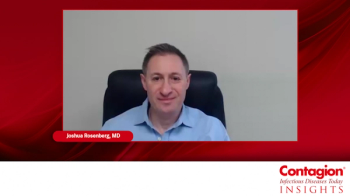
How is the CDC Working to Protect Americans from Zika?
Stephen Redd, MD (RADM, USPHS), Director of the Office of Public Health Preparedness and Response at the Centers for Disease Control and Prevention (CDC) explains how the CDC is working to protect Americans from the Zika virus.
Stephen Redd, MD (RADM, USPHS), Director of the Office of Public Health Preparedness and Response (OPHPR) at the Centers for Disease Control and Prevention (CDC) explains how the CDC is working to protect Americans from the Zika virus.
Interview Transcript (slightly modified for readability):
“Zika [response] has a couple of different elements there. One is that the place where the problem has been most intense is where the mosquito vector is in greatest abundance in
We were part of that original recognition of the association of the birth defect with Zika virus infection. In January [2016], in the laboratory, we examined brain specimens from fetuses that had died of Zika virus and saw evidence of virus infection in the brains of [these fetuses]. Within 72 hours we issued guidance for pregnant women to avoid travel to countries that were having [active] Zika virus infection.
So, the first thing is individual measures for
For people who are living in those areas where you can’t avoid the vector, [it is important to utilize] individual mosquito-avoidance measures [such as] insect repellent, long sleeves, and long pants to avoid being bitten by mosquitoes.
At a larger level,
At this point, for places where the mosquito-vector is active, [we are putting in place] all measures to prevent pregnant women from being infected and then sorting through which measures are most effective so that we can put the most effort where there will be the most value.
Another individual measure to protect pregnant women is for their significant others to use condoms. It’s not for birth control, but for the barrier protection in case the partner is infected to prevent sexual transmission to a pregnant woman.”
Newsletter
Stay ahead of emerging infectious disease threats with expert insights and breaking research. Subscribe now to get updates delivered straight to your inbox.



















































































































































































































































































